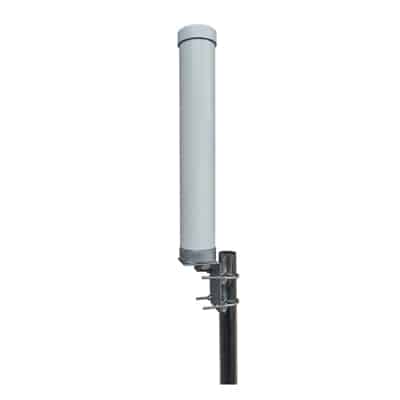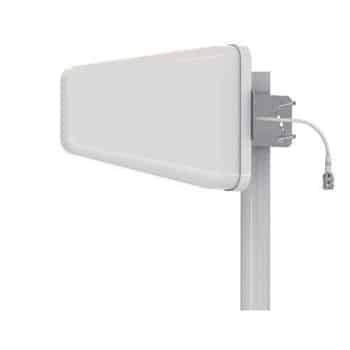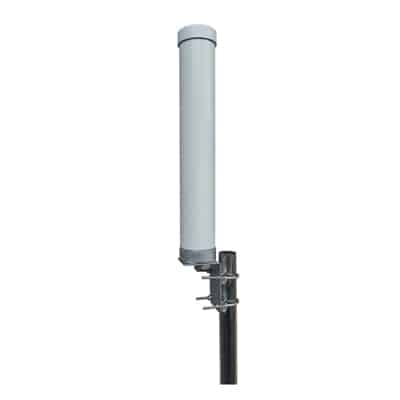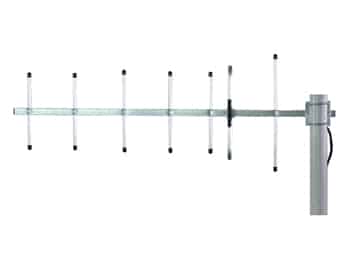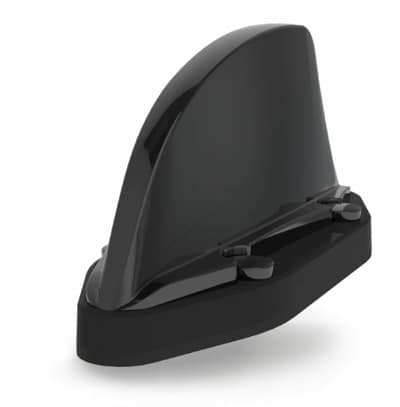
With the advancement of technology and the fast-paced modern lifestyles, the rail industry is also getting more and more advanced and moving towards smart railway systems. Rail antennas have become a necessity in the rail systems today for efficient and reliable communication. This article provides a thorough overview of rail antennas discussing their design, functionality, applications, benefits, and their impact on the rail industry while also looking at a few real-life case studies.
Table of Contents
ToggleIntroduction to rail antennas
Reliable and efficient communication is an absolute necessity for the smooth and stable operation of most modern railway systems. With the high number of correlated components in a railway system such as signaling systems, alarm systems, ticketing, video surveillance, traffic management, etc., it is crucial to implement a robust communication solution. Lack of proper communication in a railway system can result in many issues, including risks in operations, safety, and security aspects.
Rail antennas play a critical role in all these railway communication systems. They are the core components of the communication systems and the performance of the entire setup can be highly dependent on the performance of the antenna. Rail antennas are specifically designed for various railway communication applications, such as omnidirectional rooftop antennas for communication between moving trains, operating centers, and stations, as well as internal antennas for WiFi inside carriages and multi-polarized antennas. In railway systems, antennas are mainly used in railway indicators, monitoring, navigation, and passenger-use communication systems.
Basic Definition of Rail Antennas
Rail antennas are devices used by the rail industry to achieve a connected environment both for the passengers as well as for the operational tasks. The most commonly required type of rail antenna is the rooftop-mounted antenna, which is an extremely crucial component on trains. It is essential to communicate with other ongoing trains, and railway stations as well as with the operational centers, guiding and providing required signals for train drivers and passengers.
Rail antennas function similarly to any other antenna. A transmitting rail antenna radiates an electromagnetic wave, which can induce an electric current in a nearby conductor. In a receiving rail antenna, the applied electromagnetic field is distributed throughout the entire length of the antenna to receive the signal. Rail antennas are typically placed as high as possible to minimize the obstruction from any other signals.
Design and Structure
When designing a rail antenna, the physical size constraints of the rooftop of a train need to be considered. The space between the outer dimensions of the train and the maximum permitted gauge is constrained. Hence, when designing a rail antenna, it should be as small as possible, without compromising the performance or functionality of the antenna. Generally, rail antennas are around 40mm to 80mm in height and are built to operate with different communication systems such as GSM-R, UMTS, LTE, LTE MIMO, WiFi 2.4/5GHz, etc.
Typically, omnidirectional antennas are designed for use in trains as the train stations, operating centers, and other moving trains could be in any direction and need to communicate efficiently. The ground plane of a rail antenna should be ideally a large, flat, horizontal sheet of metal located above the height of any other object on top of the train. Rail antennas should be placed as far away as possible from obstructions on train rooftops, such as air conditioning fittings, as these can considerably degrade antenna performance. Another major requirement when designing rail antennas is to ensure that they are resistant to even harsh weather conditions, as they would be regularly subject to strong winds, high temperatures, a lot of wear and tear, etc.
Types of Rail Antennas
When considering rail antennas, many different types of antennas are available. Based on the use case they can be mainly divided into three categories as the antennas mounted on the rooftops of trains, antennas inside trains and antennas in train stations.
Antennas that are mounted on the rooftops of trains are typically omnidirectional or bidirectional. Omnidirectional rail antennas radiate signals uniformly in all directions. They provide comprehensive coverage around the train. Hence, they are a useful and versatile solution for all general communication requirements in trains such as for providing real-time location details, transferring and receiving operational information, tracking, surveillance, etc. Bidirectional rail antennas offer front to rear or side-to-side coverage.
These rail antennas typically combine multiple communication technologies to meet the unique requirements of railway systems. Hence, when considering types of rail antennas, there are WiFi and cellular network antennas, GPS antennas, multi-polarized antennas, MIMO antennas, etc., and antennas that are compatible with multiple of these technologies simultaneously.
Antennas that are used in railway stations can be either directional or omnidirectional antennas. Directional antennas radiate signals in a single direction. They can be useful to provide higher gain for specific coverage areas. These are ideal for trackside communication to send and receive signals, tracking information, etc. efficiently. Omnidirectional rail station-based antennas provide broader coverage and are hence ideal for train control communications, passenger information systems, and station-to-train data exchange activities. Internal rail antennas are generally used to establish a wireless network to provide internet connectivity to the passengers and staff onboard.
Technical Specifications
Rail antennas need to function reliably while the train travels through diverse network environments. Hence, rail antennas are designed to be compatible with multiple technologies like 4G and other cellular networks, GPS, WiFi etc. Rail antennas today generally support multiple cellular networks including 5G, 4G, and LTE, and work both in licensed and unlicensed frequency spectrums. WiFi-supported rail antennas, typically internal train antennas operate in both 2.4Ghz and 5GHz frequency ranges.
These antennas utilize modern technologies like MIMO and beamforming concepts. The main reason to use MIMO concept in rail antennas is due to the varying nature of the signal and its attenuation depending on the geographic location and its operating environment. The frequent fluctuations in signal parameters depending on the environmental factors will result in changes to the signal to noise ratios and impact the overall data error rate. Using MIMO in rail antennas, multiple antennas transmit and receive data simultaneously, improving signal reliability and reducing interference. Thus the data error rate will be minimized and the impact on the overall performance will be minimal due to the variations in the operating environments. Beamforming is another popular signal-processing technology that is used in rail antennas. In beamforming, signals at particular angles are subject to constructive interference while others are subject to destructive interference by combining antenna elements in a phased array arranged in a specific pattern. Beamforming is used at both the transmitting and receiving ends of communication links in railway systems to improve range, capacity, and overall performance.
Other modern technologies such as Free Space Optical communication, channel coding methods, and adaptive transmission methods can be used in rail antennas. All these technologies are utilized in rail antennas to enhance their performance. Rail antennas support GPS to enable precise location tracking. Since these antennas need to provide precise signals with minimal data errors during high speed movement, antennas with high gain and built-in amplifiers are used for rail antennas. GPS-supported rail antennas operate on L1 (1575.42 MHz) and L2 (1227.60 MHz) frequencies. Rail antennas are commonly built to comply with PTC (Positive Train Control) units that operate in the 220 MHz frequency allocation for safety-critical communications. They use multiple antenna feeds and coaxial connections for simultaneous frequency support and to have redundancy.
Applications in Rail Systems
Communication is vital in rail systems. Antennas play a key role in maintaining stable and reliable communication between all stakeholders like passengers, train operators, engineers, train station staff, etc. Rail antennas are used for many purposes in railway systems. Rail antennas are used for real-time train monitoring. With the support of GPS and fast 4G or 5G connectivity in modern rail antennas, it is possible to transfer data back and forth between operational centers and trains with minimal latency and high accuracy.
Rail antennas are also extremely useful for communication between the train crew. Another main application of rail antennas is for security and surveillance. Real-time data captured from surveillance cameras or devices are transferred to operational centers in real-time for monitoring purposes. Rail antennas are crucial here to receive data with efficiency and high resolution. By monitoring data about speed, operator awareness, and brake and engine performance and transferring them in real-time to operational centers, rail antennas can help prevent railway accidents. This is important to ensure passenger safety. Internal rail antennas that are fixed inside the trains are used to establish a wireless network for the passengers onboard. These internal rail antennas are important for passenger WiFi distribution, internal communication systems and onboard entertainment systems.
Benefits of Rail Antennas
Rail antennas are extremely useful in many aspects of the rail industry. They play a critical role in ensuring proper communication between trains, operating centers, train stations, train crew, and the onboard passengers. The smooth functioning of the entire rail system relies heavily on the performance of the rail antennas. Rail antennas are also beneficial in terms of security and protection of the passengers. Having real time surveillance camera systems will aid in proper monitoring and minimizing fraud activities, thefts, etc. Rail antennas are also useful to establish wireless networks inside trains for onboard passengers to stay connected.
Case Studies
Rail antennas have been used for various applications. Discussed below are a few real-life scenarios and use cases of rail antennas.
The Ferrovie del Gargano project demonstrates using a dedicated trackside wireless network to provide onboard WiFi in areas with limited or no mobile radio LTE coverage. In this project, the onboard WiFi network was established using two Fluidmesh FM4200 MOBI radios per train connected with high gain 2×2 MIMO roof antennas. The 5 GHz Wi-Fi base stations were positioned at 5 km intervals along the trackside delivering 100 percent coverage. This setup was able to provide 1 GB of usable bandwidth to trains traveling up to 250 mph.
As discussed, rail antennas are extremely useful in ensuring passenger safety and for incident investigations. Regina Transit railway system has experienced reduced assaults and crimes since installing several video cameras and monitoring systems as part of a pilot program in 2012. Such video surveillance and real-time monitoring is also useful to minimize false injury claims and provides protection against litigation. There also have been instances where accidents and security incidents have occurred due to the lack of rail antennas. The incident on May 12, 2015 in Philadelphia, the Amtrak crash that killed 8 passengers and crew members could have been prevented if a proper PTC had been in place with reliable rail antennas. The train that had been traveling at 102 mph in a 50 mph zone of curved tracks derailed. Efficient real-time tracking of speed and location could have enabled automatic train control and limited the speed of the Amtrak train before it reached the curve.
Chelton has designed and manufactured antennas for Thales to be used in section 2 of the Channel Tunnel Rail Link (CTRL) project, between Fawkham Junction in Kent and London St Pancras International Station. This section included bridges, tunnels, and structures along the route. With 25% of the route running within tunnels, and with trains traveling through at speeds of up to 150 mph, suitable rail antennas needed to be used in the project. The antennas used had to withstand and absorb the vibrations caused by the wind speed of the trains in tunnels. Antennas therefore had to be tough, reliable, have low wind loading, and meet the RF requirements. The antennas used also had to be discreet in appearance in order to merge into the background so as to not reduce the aesthetic appearance. The antennas had to be at power levels that covered the frequencies for GSM-R, Cab Secure Radio, and the London Fire Brigade services. A special slim panel antenna was designed to support the emergency services system in the London tunnel and the emergency evacuation routes.
Impact on the Rail Industry
With the rising focus on railway upgradation and smart transportation systems, rail antennas will have a major impact on the rail industry. Also with the increasing need for high-speed rail networks, the requirement for precise train tracking and control systems goes hand in hand. To facilitate reliable communication, safety and improved operations needs, rail antennas will be a crucial component. Rail antennas will have a huge impact in the rail industry in all aspects including radio communication between moving trains, operating centers, and stations, guaranteeing safe wireless data connections, implementing proper monitoring and navigation systems, installing stable railway indicators, and implementing internal passenger use wireless network systems. With the advancement of technologies like 5G, satellite navigation, and IoT devices and the growing trend of the digitalization of the transport sector, the impact of rail antennas on the rail industry will further grow. The rail antenna market will also expand in the future with the expected massive impact that rail antennas have on the rail industry.
Conclusion
Rail antennas are a crucial element in modern railway systems. Rail antennas are used in various aspects of the rail industry. This includes real-time tracking and monitoring, precise navigation and speed control, video surveillance, ensuring the safety of passengers, train crew communication systems, onboard WiFi network for passengers, etc. With the advancement of modern technologies like 5G and IoT and the growing emphasis on building smart transportation systems, the impact of rail antennas will be even greater in the future.

